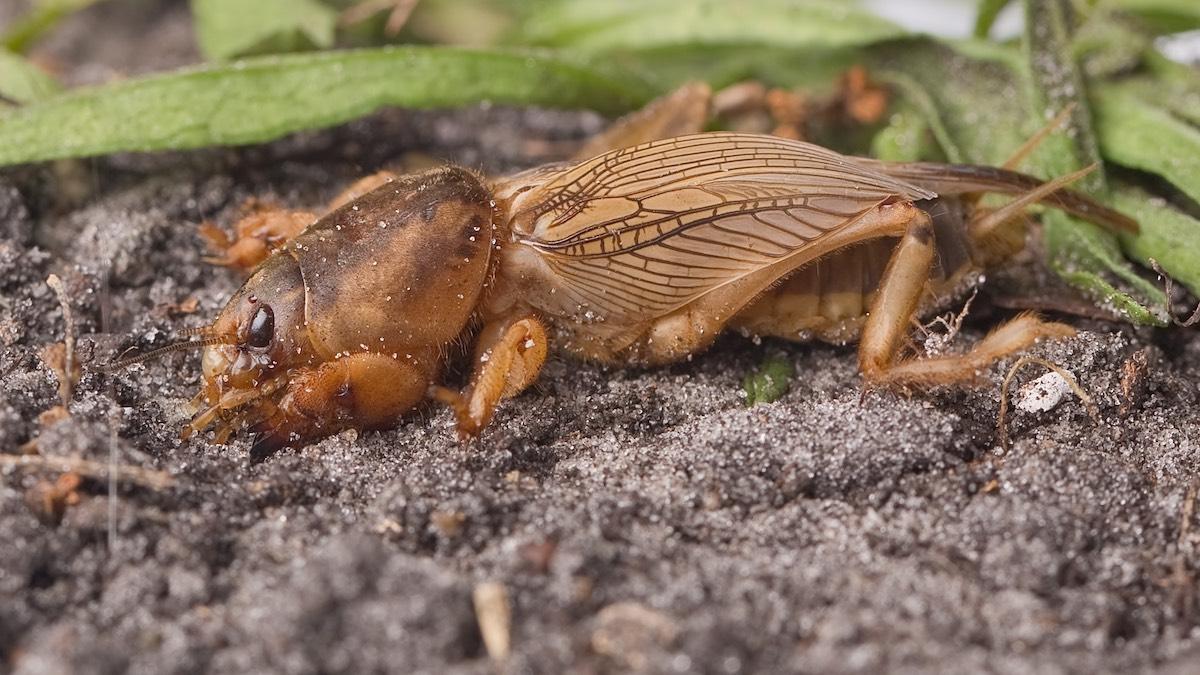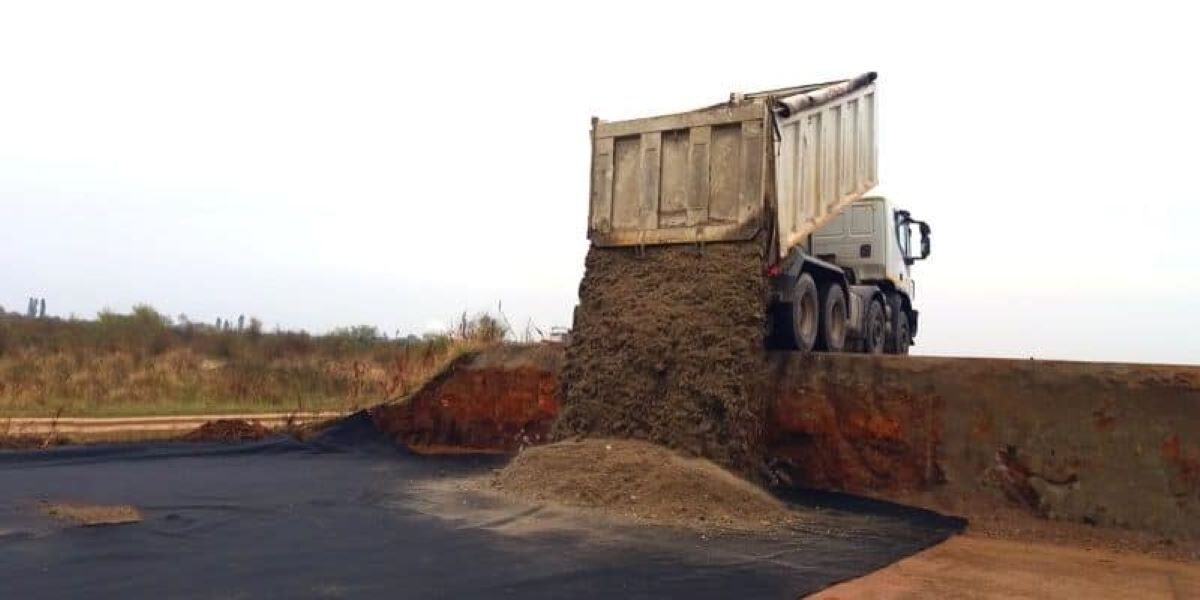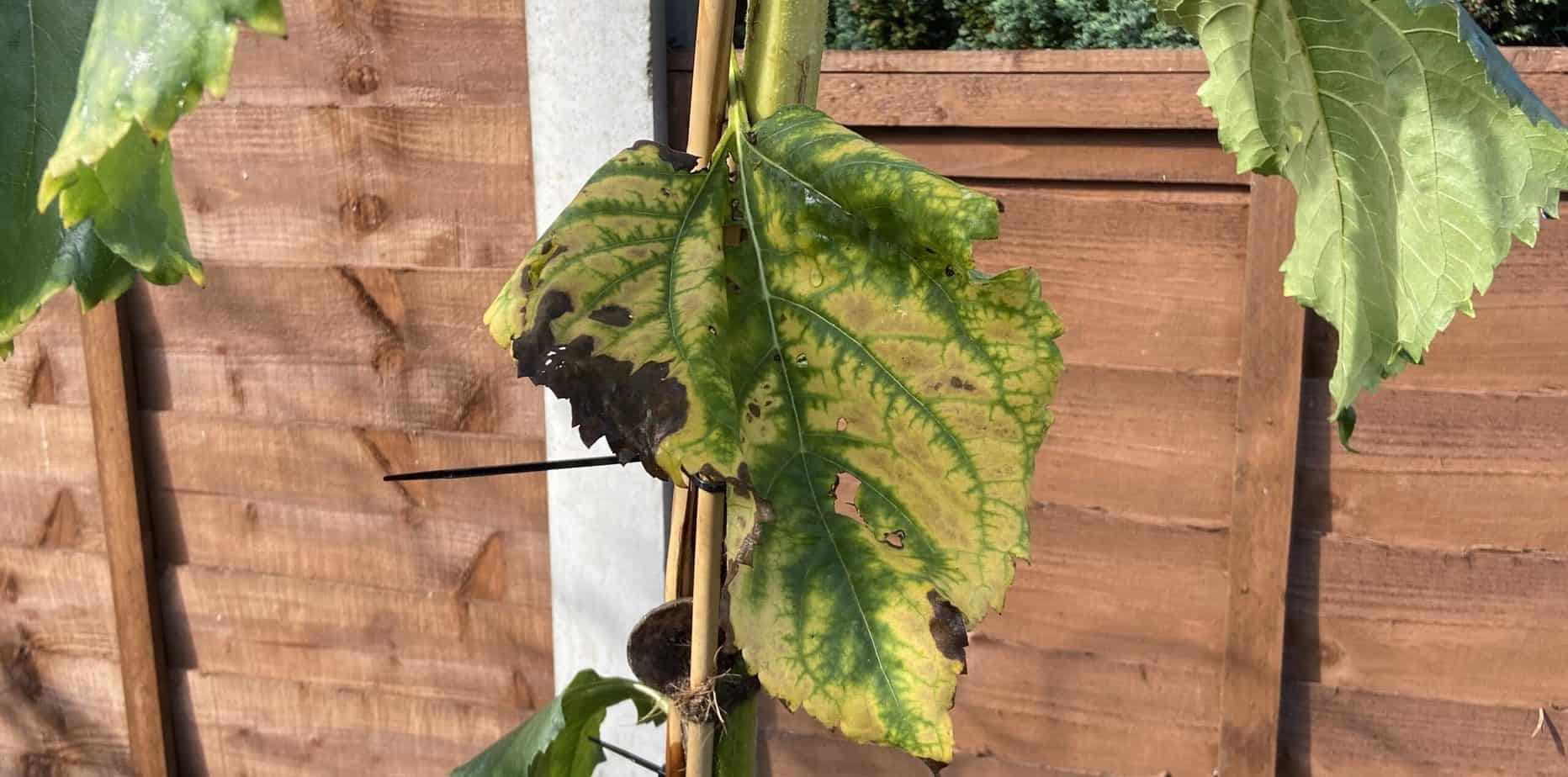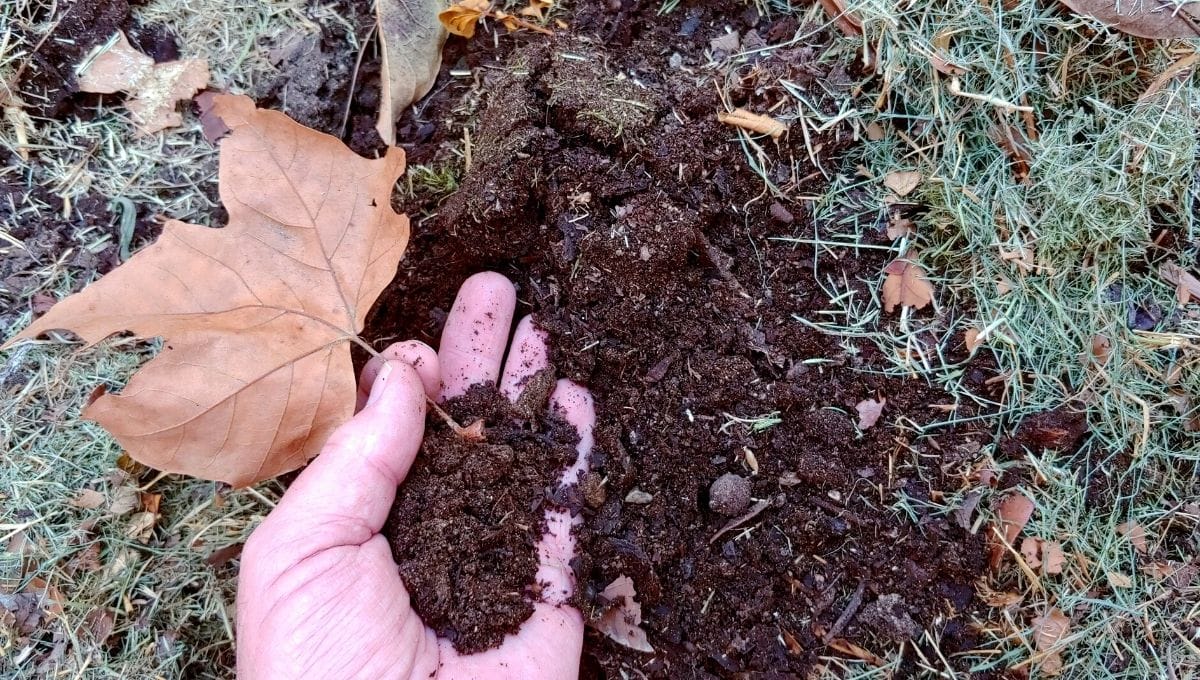Home>Gardening News and Trends>Latest News>What Insects Leave Dirt Mounds


Latest News
What Insects Leave Dirt Mounds
Modified: February 6, 2024
Stay up to date with the latest news about what insects leave dirt mounds and discover fascinating insights into their behavior and habitats.
(Many of the links in this article redirect to a specific reviewed product. Your purchase of these products through affiliate links helps to generate commission for Chicagolandgardening.com, at no extra cost. Learn more)
Table of Contents
Introduction
Welcome to the fascinating world of insect dirt mounds. These intriguing structures, often found in gardens and other outdoor spaces, are the result of the activities of various insect species. Insect dirt mounds can vary in size and shape, and their formation can provide valuable insight into the behavior and ecology of the insects that create them.
Understanding the causes and characteristics of insect dirt mounds can lead to a deeper appreciation of the intricate web of life in our ecosystems. From the small dirt mounds created by ants to the massive hills constructed by termites, these structures play a significant role in the lives of insects and their interactions with the environment.
In this article, we will explore the different types of insects that create dirt mounds, the reasons behind their mound-building behavior, and the significance of these structures in the larger ecological context. We will also examine how humans interact with insect dirt mounds and the potential impacts of these interactions.
So, whether you’ve stumbled upon a small anthill in your backyard or have marveled at the towering termite mounds in the savannah, join us on this journey to unravel the mysteries of insect dirt mounds. Get ready to dive into the fascinating world of insect ecology and discover the hidden wonders beneath the surface.
Understanding Insect Dirt Mounds
Insect dirt mounds are structures created by various insect species as a result of their natural behaviors and survival strategies. These mounds serve multiple purposes, ranging from providing shelter and protection to facilitating food storage and waste management.
The construction of these dirt mounds is a complex process that varies depending on the insect species involved. Ants, for example, build their mounds by excavating soil and creating intricate networks of tunnels and chambers. Termites, on the other hand, construct mounds by utilizing a mixture of soil, saliva, and secreted enzymes to create durable and waterproof structures.
The size and shape of insect dirt mounds can vary significantly. Some are small and inconspicuous, while others can reach impressive heights and diameters. The architecture of the mounds also differs, reflecting the specific needs and behaviors of the insects that build them.
Understanding the formation and characteristics of these dirt mounds can provide valuable insights into the behavior and ecology of the insects involved. Researchers have studied these structures to analyze the social structure of ant colonies, monitor termite populations, and investigate the impact of mound-building insects on soil composition and vegetation patterns.
Insect dirt mounds are often located in areas with favorable conditions for the insects. Ants, for example, may build their mounds near food sources or in moist areas to ensure a constant supply of water. Termites, on the other hand, prefer warm and humid environments for their mound construction.
While many insects create dirt mounds for practical reasons, such as shelter and protection, some species also use them for reproductive purposes. Certain types of wasps, for instance, construct underground burrows to lay their eggs and provide a safe environment for their offspring to develop.
Overall, understanding insect dirt mounds is essential for gaining insights into the behavior, ecology, and evolutionary adaptations of these fascinating creatures. By studying the characteristics and functions of these mounds, scientists can gain a deeper understanding of the intricate relationships between insects and their environments.
Causes of Insect Dirt Mounds
Insect dirt mounds are created by various factors that influence the behavior and natural tendencies of different insect species. These causes can be classified into several broad categories, including protection, reproduction, food storage, and waste management.
One primary cause of insect dirt mound formation is the need for protection. Many insects build these structures as a means of shielding themselves from predators and adverse weather conditions. The mound provides a barrier that deters predators and creates a controlled microclimate within, offering a safe haven for the insects.
Reproduction is another significant factor that drives the construction of dirt mounds. Certain species, such as burrowing wasps, build intricate underground chambers in which they lay their eggs and provide a suitable environment for their offspring to develop. These mounds ensure the survival and successful reproduction of the species.
In addition to protection and reproduction, food storage is also a key cause of insect dirt mound creation. Some ants, for example, construct mounds to store food resources that are collected from their foraging activities. The mound serves as a centralized storage location, allowing the ants to maintain a steady food supply and support the colony’s growth and survival.
Waste management is yet another reason for the formation of insect dirt mounds. Termites, for instance, build mounds that serve as ventilation and waste disposal systems. The intricate network of tunnels and chambers within the mound helps to regulate the airflow and facilitate the removal of waste materials from the termite colony.
It is important to note that different insects have specific adaptations and strategies for constructing dirt mounds based on their ecological requirements and behaviors. For example, fire ants create dome-shaped mounds with underground chambers to protect their colony from flooding, while mound-building termites construct large and complex mounds that regulate temperature and humidity.
Understanding the causes of insect dirt mound formation provides insights into the intricate web of interactions between insects and their environments. By studying the factors that drive mound construction, scientists can gain a deeper understanding of the evolutionary adaptations and ecological roles of these fascinating insect structures.
Types of Insects That Create Dirt Mounds
Various insect species engage in the construction of dirt mounds as part of their natural behaviors and survival strategies. These insects can belong to different taxonomic groups and have distinct characteristics and mound-building techniques. Let’s explore some of the common types of insects that create dirt mounds:
1. Ants
Ants are well-known for their ability to build intricate dirt mounds. They excavate soil and create a network of tunnels and chambers within the mound. Ant mounds vary in size and shape, depending on the species and the size of the colony. These mounds serve as shelter, food storage, and nurseries for ant colonies.
2. Termites
Termites are famous for their impressive mound-building abilities. They construct massive structures using a combination of soil, saliva, and secreted enzymes. Termite mounds can reach towering heights and house complex systems of tunnels and galleries. These mounds provide shelter, regulate temperature and humidity, and facilitate waste management for termite colonies.
3. Wasps
Certain species of wasps, such as burrowing wasps, create dirt mounds for reproduction. They excavate underground burrows where they lay their eggs and provide a safe environment for their offspring to develop. These mounds serve as protective nests for the wasps’ young.
4. Bees
Some species of bees, particularly solitary ground-nesting bees, construct small dirt mounds as part of their nest-building process. These mounds often consist of loose soil or clay and serve as protective chambers for the bees’ eggs and larvae.
5. Moles
Moles are not insects but small mammals that create dirt mounds known as molehills. These mounds are the result of moles burrowing underground in search of food and creating tunnels. Molehills can vary in size and are typically composed of soil and vegetation that the moles push to the surface.
These are just a few examples of the diverse array of insects that create dirt mounds. Each species has its unique adaptations and mound-building techniques, which are shaped by their ecological needs and behaviors.
Studying the different types of insects that create dirt mounds allows scientists to gain a deeper understanding of the fascinating behaviors and ecological roles of these insects. It also highlights the remarkable diversity and complexity of the natural world.
Characteristics of Insect Dirt Mounds
Insect dirt mounds exhibit a range of characteristics that are specific to the species constructing them and the ecological conditions in which they are found. The size, shape, composition, and architecture of these mounds can vary significantly. Understanding these characteristics provides valuable insights into the behavior and ecology of the insects involved.
Size and Shape: Insect dirt mounds can vary in size, ranging from small anthills to towering termite mounds. The size of the mound is often determined by factors such as the size of the insect colony, the availability of resources, and the need for protection or thermal regulation. The shape of the mounds can also vary, with some being conical, dome-shaped, or even irregular in form.
Composition: The composition of insect dirt mounds depends on the insect species and the availability of materials in the surrounding environment. Ant mounds, for example, are predominantly made up of excavated soil, while termite mounds consist of a mixture of soil, saliva, and secreted enzymes. Some mounds may also contain other materials like plant debris, pebbles, or animal secretions.
Architecture: The architecture of insect dirt mounds reflects the specific needs and behaviors of the insects constructing them. Ant mounds often consist of a network of tunnels, chambers, and ventilation shafts. Termite mounds, on the other hand, feature a complex system of galleries, chimneys, and chambers that regulate temperature and humidity. The architectural design of the mound contributes to the functionality and survival of the insect colony.
Location: Insect dirt mounds are found in various habitats, depending on the ecological preferences of the insect species. Ant mounds are often constructed in open areas with access to food sources, while termite mounds are commonly found in warmer regions with optimal soil conditions. The location of the mound is critical to ensure the insects’ survival, protection, and access to resources.
Visibility: The visibility of insect dirt mounds can vary. Some mounds, such as ant hills, may be small and inconspicuous, while others, like termite mounds, can be large and easily noticeable. The visibility of the mound can depend on factors such as the mound’s size, shape, color, and the surrounding environment. It is worth noting that some insects may also construct hidden or underground mounds that are not immediately visible to the human eye.
Evolutionary Adaptations: The characteristics of insect dirt mounds are the result of evolutionary adaptations that have allowed these insects to thrive in various environments. The mound-building behavior has evolved to provide protection, regulate temperature and humidity, facilitate reproduction, and enhance survival in challenging ecological conditions.
By studying the characteristics of insect dirt mounds, researchers can gain valuable insights into the behavior, ecology, and evolutionary adaptations of these fascinating insects. It also highlights the remarkable diversity and complexity of mound-building strategies in the natural world.
Role of Dirt Mounds in Insect Ecology
Dirt mounds created by insects play a significant role in the ecology of these fascinating creatures. These structures serve multiple functions that contribute to the survival, reproduction, and ecological interactions of the insects involved. Understanding the role of dirt mounds provides valuable insights into the complex web of relationships within insect communities and their environments.
Shelter and Protection: One of the primary roles of dirt mounds is to provide shelter and protection for the insects. The intricate tunnels, chambers, and architecture of the mounds create a safe environment for individuals and colonies. These structures act as physical barriers against predators and adverse weather conditions, offering a refuge where insects can thrive and carry out their daily activities.
Thermal Regulation: Dirt mounds can also play a crucial role in regulating the internal temperature of an insect colony. Termite mounds, for instance, are designed to maintain a stable temperature and humidity level. The mound’s architecture, combined with the insects’ behaviors, allows for efficient temperature control, protecting the colony from extreme heat or cold.
Food Storage: Insect dirt mounds often serve as storage facilities for food resources. Ant mounds, for example, contain chambers where ants store food they have collected during foraging activities. These food stores ensure a constant supply of nourishment for the colony, particularly during periods of scarcity or unfavorable conditions.
Nest Sites and Reproduction: Many insects use dirt mounds as sites for nesting and reproduction. Burrowing wasps construct underground chambers within their mounds to lay their eggs and provide a safe environment for their young. These structures serve as protected nurseries where offspring can develop and thrive until they are ready to venture out into the world.
Ecosystem Engineers: Insect dirt mounds can have a profound impact on their surrounding ecosystems. For instance, termite mounds modify soil composition and structure, influencing nutrient cycling and soil fertility. The network of tunnels and chambers created by ants can enhance soil aeration and drainage. These ecosystem engineers play a crucial role in shaping habitats and influencing the distribution and abundance of other species in their ecosystems.
Ecological Interactions: Dirt mounds also contribute to various ecological interactions within insect communities and their environments. They create microhabitats that support a diverse range of plant and animal species. Birds, for example, may use termite mounds as perches or nesting sites. Some plants benefit from ant-distributed seeds, which are carried to the mound for storage or discarded, aiding in establishment and dispersal.
The role of dirt mounds in insect ecology is multifaceted, encompassing shelter, thermal regulation, food storage, reproduction, and ecosystem engineering. These structures are integral to the survival and ecological interactions of insects, highlighting their importance in the larger natural world.
Significance of Insect Dirt Mounds in Ecosystems
Insect dirt mounds play a significant role in the overall functioning and dynamics of ecosystems. These structures, created by various insect species, have wide-ranging ecological significance that extends beyond the individual insects and directly impacts the surrounding environment and other organisms within the ecosystem.
Habitat Creation: Dirt mounds serve as microhabitats within an ecosystem, providing shelter and resources for a diverse range of organisms. From the chambers and tunnels of ant mounds to the intricate galleries of termite mounds, these structures create niches where other invertebrates, plants, and microbes can thrive. Soil-dwelling organisms, in particular, benefit from the modified environment and nutrient-rich conditions within these mounds.
Species Interactions: Insect dirt mounds foster interactions between different organisms within an ecosystem. For example, certain plant species have symbiotic relationships with ants, relying on the dispersal of seeds by ants who carry them to their mounds. In turn, the plants provide food and shelter to the ants. These interactions create a mutualistic relationship that promotes biodiversity and species coexistence.
Soil Modification and Nutrient Cycling: The construction of insect dirt mounds can have substantial impacts on soil structure and nutrient cycling. For instance, termite mounds can modify soil porosity, promoting better water infiltration and drainage. The activities of ants within their mounds can enhance soil aeration and nutrient redistribution. These modifications influence soil fertility, vegetation patterns, and overall ecosystem productivity.
Regulation of Microclimate: Dirt mounds created by insects can regulate microclimates, creating localized conditions that may differ from the surrounding environment. This temperature and humidity regulation can benefit both the insects and other organisms utilizing the mound. For example, certain amphibians may seek refuge within termite mounds during periods of extreme heat or dryness, taking advantage of the more favorable microclimate.
Impact on Carbon Sequestration: The construction and activities of mound-building insects can influence carbon sequestration in ecosystems. Insects, such as termites, contribute to carbon storage through the incorporation of organic matter into their mound structures. Additionally, the modifications to soil structure and nutrient cycling caused by insect dirt mounds can influence carbon dynamics and the balance of greenhouse gases in the atmosphere.
Indicator of Ecosystem Health: The presence and characteristics of insect dirt mounds can serve as indicators of ecosystem health and functioning. Changes in mound distribution, size, or species composition can reflect disturbances or imbalances within the ecosystem. Monitoring the abundance and condition of these mounds can provide valuable insights into ecosystem dynamics, habitat quality, and the impacts of environmental changes.
The significance of insect dirt mounds in ecosystems extends beyond their role in the lives of the insects constructing them. These structures provide habitat, influence species interactions, modify soil conditions, regulate microclimates, impact carbon dynamics, and serve as indicators of ecosystem health. Understanding and protecting these mounds is crucial for maintaining the resilience and balance of diverse ecosystems.
Human Interaction with Insect Dirt Mounds
Human interaction with insect dirt mounds can vary depending on the context and species involved. These interactions can range from admiration and appreciation to pest control measures that aim to mitigate any negative impacts on human activities. Understanding these interactions helps us navigate our relationship with these fascinating structures and the insects that create them.
Ecotourism and Education: In some cases, insect dirt mounds can be a source of fascination and interest for humans. Tourists and nature enthusiasts visit areas with impressive termite mounds or ant colonies, providing an opportunity for ecotourism and educational experiences. Visitors can learn about the ecological significance of these structures and gain a deeper appreciation for the intricate interactions between insects and their environments.
Land Management and Agriculture: In agricultural settings, insect dirt mounds can sometimes be viewed as pests. Certain species, such as fire ants, can pose a threat to human activities and agricultural practices. Control measures may be implemented to manage their populations and reduce the negative impacts they may have on crops, livestock, or human health. However, it is important to take a balanced approach to pest control and consider the potential ecological consequences.
Research and Conservation: Scientists study insect dirt mounds to gain insights into insect behavior, ecological interactions, and ecosystem dynamics. Research helps us understand the significance of these structures and their role in maintaining biodiversity and ecosystem function. Conservation efforts may focus on protecting habitats with abundant and diverse mounds, preserving key biodiversity hotspots, and ensuring the sustainability of insect populations that construct these mounds.
Urban Planning and Landscape Design: In urban and suburban areas, human interactions with insect dirt mounds can involve considerations of urban planning and landscape design. Some species, such as digger bees, create mounds in lawns or gardens. Balancing the needs of these insects with human activities may involve designating certain areas for mound-building insects or implementing measures to coexist harmoniously with their presence.
Cultural and Artistic Symbolism: Insect dirt mounds can also hold cultural and artistic significance. In some cultures, these structures are associated with themes of industriousness, resilience, or the intricate interconnectedness of nature. Their unique shapes and patterns may inspire artistic expressions or be incorporated into cultural narratives, folklore, or artwork.
Human interaction with insect dirt mounds can be multifaceted, ranging from ecotourism and education to pest control and urban planning. By understanding the ecological importance and cultural significance of these structures, we can develop sustainable and responsible approaches to coexistence, fostering a deeper understanding and appreciation for the diverse world of insect ecology.
Conclusion
Insect dirt mounds are fascinating structures that play a significant role in the lives of insects and the functioning of ecosystems. These mounds, created by various insect species, serve as shelters, nurseries, food storage areas, and ventilation systems. They regulate microclimates, modify soil composition, and influence species interactions within their respective ecosystems.
Understanding the causes, characteristics, and ecological significance of insect dirt mounds is crucial for appreciating the intricate and complex world of insects. These structures provide valuable insights into the behavior, ecology, and evolutionary adaptations of the insects that construct them.
From ant colonies diligently excavating soil to create intricate underground networks, to towering termite mounds shaping landscapes, insect dirt mounds are testaments to the remarkable diversity and ingenuity of the natural world. These structures hold not only scientific value but also cultural and artistic significance, inspiring wonder and admiration across different societies and disciplines.
As humans, our interaction with insect dirt mounds can range from ecotourism and education to the need to manage pests in agricultural settings. It is essential to strike a balance between appreciating the ecological significance of these structures and addressing any negative impacts they may have on human activities.
Conservation efforts, research, and responsible land management practices can help ensure the preservation of habitats that harbor diverse and abundant mounds. By appreciating and protecting these structures, we can contribute to the maintenance of biodiversity, ecosystem resilience, and the delicate balance of our natural world.
So, whether you marvel at the impressive termites mounds in the savannah, encounter the industrious ants in your backyard, or appreciate the cultural symbolism associated with insect dirt mounds, the journey into the world of insect ecology and their remarkable structures is one filled with awe, intrigue, and a deeper appreciation for the interconnectedness of all living things.










